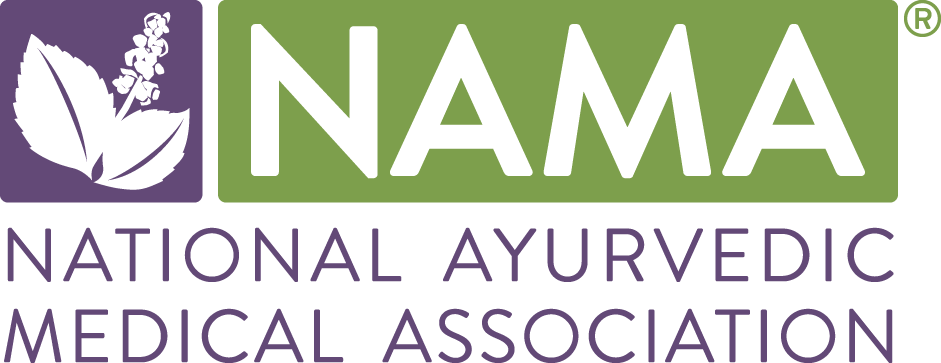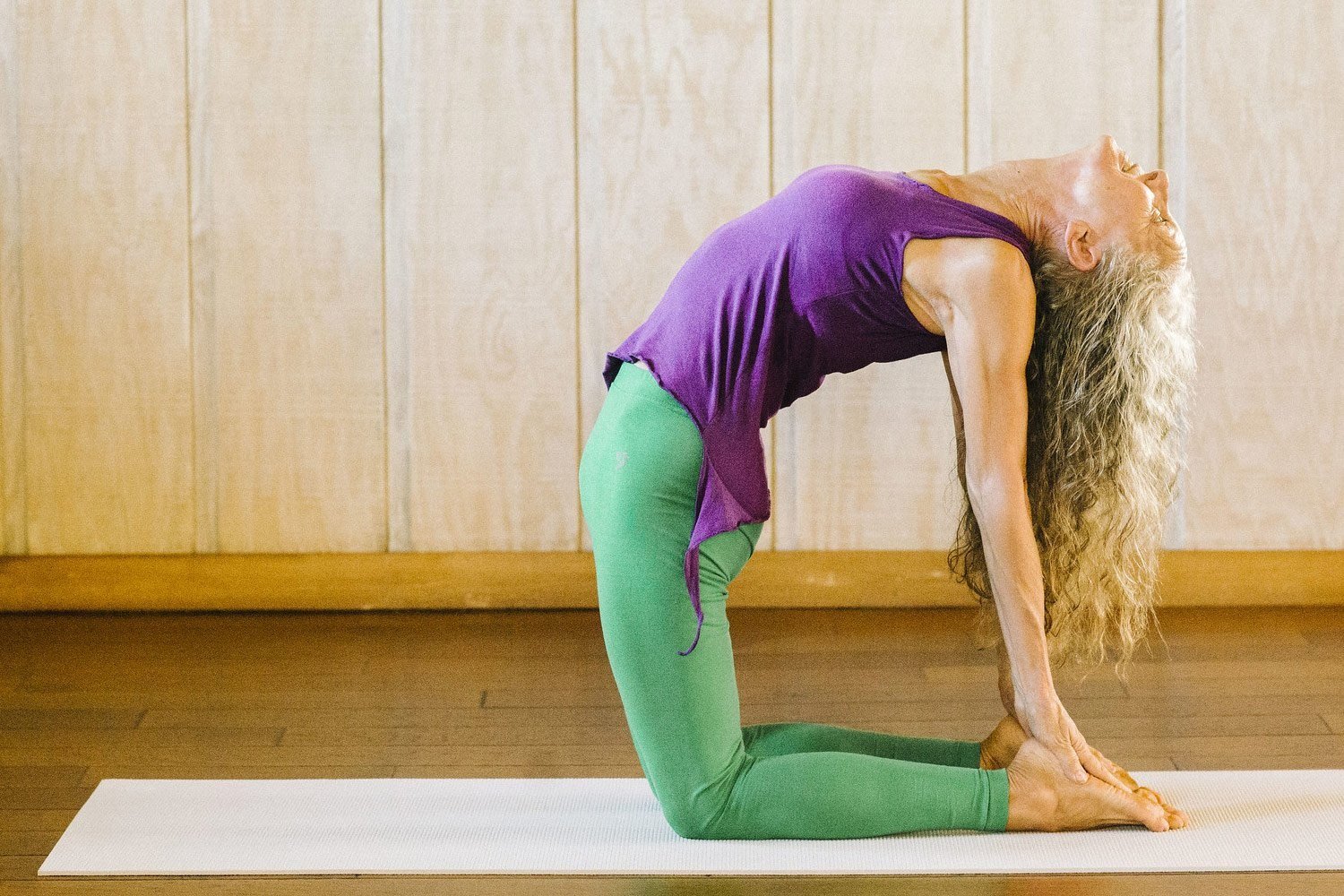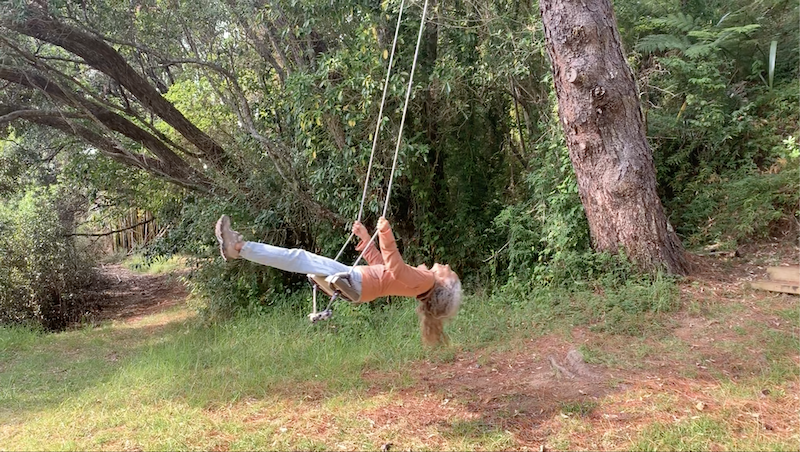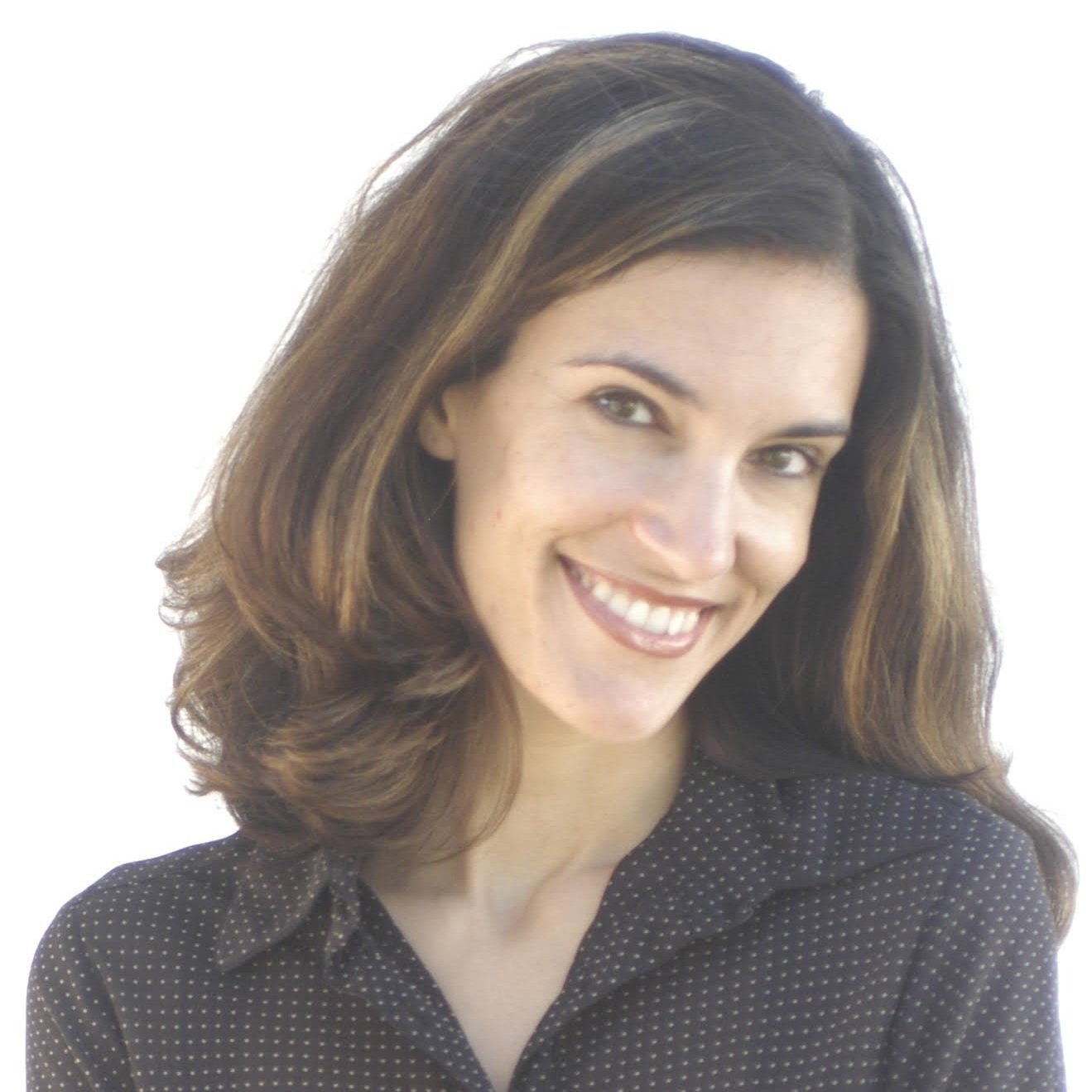An interview with Myra Lewin, CAP AYT, Bali, Indonesia
by Maria Radloff
Is it possible to have a successful, thriving Ayurveda and Yoga business for over twenty-three years? Myra Lewin, NAMACB board certified Ayurvedic Practitioner and Ayurveda Yoga Therapist of Hale Pule Ayurveda and Yoga, has established that it not only is possible, but also can be done in a way that fosters self-preservation and balance.
I spoke with my Myra, who currently resides in a village outside of Ubud on the island of Bali. I could hear the tropical birds singing as we spoke on Zoom about how she was denied re-entry to her new residence in New Zealand due to the Covid-19 lockdown. When asked how this situation affected her business, she stated that many of the in-person trainings such as chef trainings and treatment trainings had already been cancelled due to Covid-19, but because her entire clientele was now online, moving locations was something that could be done with ease. Before coming to New Zealand, Myra had developed a beautiful Yoga and Ayurveda practice in Hawaii over the span of twenty years, in which 80 percent of the business was offered in person.
Being online has simplified her business and allows her to reach a global population, including people in pockets of the world that would never otherwise have access to her services. Although her business is more profitable, the struggle now is monitoring time spent at the computer since she has seen the effects on her body from sitting at a desk all day. Seven hours is tolerable, but on some days, the hours at her computer can get up to ten! She looks forward to returning to in-person clients and trainings by the end of the year.
Growing up in rural Tennessee, Myra enjoyed working on and racing cars, crafting with wood, and teaching. She got her first car at fourteen! She explored a career in manufacturing and distribution, but after ten years, the details of her true path began to unfold. She had been teaching Yoga and Ayurveda daily, doing workshops, and seeing clients since 1996, but based on an astrologer’s suggestions, she moved to the Hawaiian Islands, and felt the push to begin her full-time Yoga and Ayurveda business, even though it’s not what she ever expected she would do.
A beloved grandfather had shared words of wisdom about work and life with her, stating that those two things should co-exist. And from that inspiration, Hale Pule (“House of Prayer”) was launched in her Hawaiian home, allowing Myra to create a sanctuary for both herself and the clients she was serving.
So what are the secrets to Myra’s success?
Running a small business isn’t easy. It requires a major investment of time and energy, and there are sacrifices to be made. Attempting to become an entrepreneur can turn a person’s life upside down—leading to eating fast food on the run, not exercising, letting relationships fall apart, and definitely not making time for yoga practices. It’s almost a death sentence for some. But here is Myra, twenty-three years later, looking healthy and radiant, just going with where the universe takes her business and her.
1. Create a foundation assembled of practices that support you.
What does a normal “day at the office” look like for Myra? Since she has fully integrated her work and personal life, she starts her day early with her own practices. Unless she is catching an early flight or feeling sick, which only happens once every five to seven years, she never misses the meditation or pranayama segments of her daily yoga routine. She insists that having this foundation is critical to well-being and success. The rest of her day is filled with consults, administrative work, and team meetings. And she always finds time to cook simple meals and take a walk.
Before moving to Hawaii, Myra dabbled in Iyengar yoga, but soon switched to Ashtanga Vinyasa yoga when a friend suggested she needed a breathier practice. Working her way through Patthabi Jois’s first three series, she to this day draws from the Ashtanga practice.
Investing deeply in her foundation, she studied with Richard Freeman in Colorado, as well as trekking around the world to Mysore, India, to study with the creator himself, Sri Patthabi Jois. She was willing to share some funny stories of practicing with some of these master teachers, which all seem to take place in small spaces!
She met a lovely German fellow at the original Mysore Ashtanga yoga shala, which held only twelve people. Imagine a hot, sticky room, filled to capacity with moving bodies, sweating onto mats. The German gloated about his healthy, all-cabbage diet—from both his mouth and, well, the other end.
The other story takes place at Tim Miller’s shala in Carlsbad, California. A traditional Ashtanga Mysore practice lines up practitioners in two rows, facing each other. While getting into garbha pindasana, Myra found herself doing a complete summersault out of the posture, rolling into the row across from her. Ashtanga yoga practice is good for not only building strength and flexibility, but also serving up a nice dose of humility.
A beautiful lesson that Myra enjoyed sharing with me was that you can’t rush or force things in life, regardless of how enticing they may be. Only a couple of months into her deep dive into the Ashtanga yoga system, she had hopped into an advanced class that her mind loved, but her nervous system simply wasn’t ready for. After the practice, a friend found her sitting outside on the sidewalk, noticing something was wrong, making it clear there is no fast-tracking one’s yoga practice. To this day, Myra continues to practice a true vinyasa (slow connection of the poses with the thread of the breath) from Ashtanga yoga, modified to meet her body’s balancing needs.
From her own experience in going too far, too fast, she instructs her yoga clients to practice from the inside out. She asks them to focus inward, with full attention on the body, energy, and mental state rather than what is going on around them. She encourages a challenging practice yet not going beyond your limit. One of the most prominent trends she has seen in yoga is pushing too hard and over-practicing, causing depletion and injuries.
2. Manage your energy from the inside out.
This takes us to another important secret of success—managing one’s energy. I inquired about how she manages to fit in her own practices, cook her meals, and keep up with work, even on the craziest of days. She laughed and said she doesn’t allow herself to have crazy days. She can’t afford the vata vitiation that gets stirred up from over-scheduling or trying to do too much. She values a steady day that chugs along at a comfortable, peaceful pace. She even takes this ideology with her on trips to Japan, where—although she believes that Tokyo is the fastest place on the planet—she maintains steadiness and good measure. Anything is possible when you take the time to prioritize, stay with the plan, and be a bit flexible.
We all must plan and prioritize our activities in this busy world, which offers so many interesting opportunities and enticing choices! Because it is easy to derail with distractions, one must be focused and not tempted to chase down and invest precious time into things that aren’t on the priority list. To illustrate, she shared a story of a client who offered to teach her 250 mantras. While she was amazed and enchanted that somebody could maintain such a lovely collection of chants, Myra instantly knew that her three to four chants were sufficient for her practice and was then able to strategically decline the tempting offer. It’s important to value experiences and practical application of knowledge rather than constantly collecting data and information.
This is another trend that she sees seducing humanity—trying to do too much. Without having a conscious understanding of one’s priorities, how can the right choices be made? She sees that overscheduled children will face imbalances as they grow up from not having the discernment to turn away exciting opportunities that sidetrack them from their true goals. This will exhaust them at an early age, depleting their ojas and vitality.
Throughout the day, Myra doesn’t let the outside world dictate the inside pace of her life. There is no need to succumb to panic from others if one can remain focused on the schedule and priorities set for the day. Energy management starts with having a clear vision of what the priorities are and making choices to support them, rather than becoming distracted. It’s okay to let everything else go.
A peek inside Myra’s successful business
Myra loves watching trends. Living in Hawaii, she watched the tourists as they ate in the local restaurants. Over the years, she saw their health declining as modern eating habits increasingly diverged from sustainable lifestyles. She constantly sees eating fads in the news and uses all this information to educate her clients on how to eat without falling victim to these modern trends.
When I asked Myra if she had any advice for new NAMA Professional Members, she offered that you need to remain attuned to the reasons why you chose this path in the first place. What is in your heart? Make your choices from the inside out. Stay focused. Clear the limiting beliefs that hold you back.
1. Health starts in the kitchen.
This is illustrated in Myra’s desire to heal those who have fallen victim to poor eating habits. She follows her heart, not getting distracted by all the other problems in the world. A yoga teacher once instructed her to make cooking a part of her yoga practice. At the time she was not one who enjoyed cooking, let alone cleaning up afterwards!
Myra grew up learning to cook a bit from her mother since they lived in a rural area and eating out wasn’t convenient. She learned just enough that she was able to serve up an entire Thanksgiving meal when she was eight because her mom had fallen sick that day. But it wasn’t until Myra dove into Ayurveda that her cooking skills solidified enough to author two cookbooks.
Before Ayurveda really hit the U.S., there were only two Ayurvedic cookbooks available: Amadea Morningstar’s The Ayurvedic Cookbook and Dr. Vasant Lad’s Ayurvedic Cooking for Self-Healing, which focused mainly on Indian cuisine. While these books were helpful introductions, it wasn’t until she got to peek into some kitchens in India that she had some aha moments.
Myra produced two books on Ayurvedic eating and cooking. The first, Freedom in Your Relationship with Food: An Everyday Guide (2008), was written as a transitional book since Ayurveda hadn’t quite found its way into the mainstream yet. The book covers how to eat in a style that is still familiar to people in Western cultures, but gently introduces Ayurvedic practices. It also offers recipes that are accessible to those living in the West.
Her second book, Simple Ayurvedic Recipes: A Companion Cookbook to Freedom in Your Relationship with Food (Simple Ayurvedic Cooking) (2011) focuses more on recipes based on her own simple everyday cooking—nothing fancy, just meals that are tasty and fulfilling. Rather than including photos of the food, Myra left the task of visualization to her readers’ imagination so they could create their own dishes, not recreate hers. Everyone has a different kitchen, a different environment, and a different body to feed, so food should be personalized, just like everything else in Ayurveda.
I was curious about her favorite flavors and spices, and when I asked her about them, she noted that we should be wary of our favorites because those preferences can indicate an imbalance. But to play along with my question, she did offer that she loves a nice blend of cardamom, cinnamon, and vanilla, as well as the pairing up of rosemary and ginger. She loves having access to fresh cilantro and coriander in Bali, too. Her advice when it comes to spicing is to begin with three spices plus salt, until you get familiar with some tasty blends and can begin creatively expanding your own master mixes.
Regardless of cooking skills, love is always the most important ingredient. Sharing meals with friends and family is a wonderful expression of this love, and it supports a connection with one’s self, the other dinner guests, and nature. Having grown up in a large family, Myra cautions against bringing the day’s drama to the dinner table, suggesting that we just keep the conversation light and enjoyable. Having some meals in complete silence connects us with the food and eating process.
2. Yoga and Ayurveda must be used together.
While practicing yoga helps us better understand ourselves as eternal, Ayurveda heals us from the disease stemming from our disconnection from this truth. An understanding of the holistic nature of using yoga and Ayurveda together for healing explodes the old way of viewing things, and as one’s thinking evolves, incredible changes take place. This allows life to get fabulous! Peak results are derived.
I asked her which topic in Ayurveda was her favorite to discuss with her students. She expressed how much she enjoys discussing the six stages of disease with them because they begin to observe their own symptoms and how imbalances evolve, so they can then take steps to reverse the disease process.
As one of the the early disciples of the integration of yoga and Ayurveda in the U.S, Myra grew up with access to master teachers who greatly inspired her, such as David Frawley, Robert Svoboda, Patricia Hansen, and Sarasvati Burman. Now that she is a master teacher herself, I wondered what advice she would offer a student seeking to embark on a new Ayurveda program. She suggested first getting clear on the why, visualizing how he or she wants to work with clients, and how that might show up in his or her life. For example, at what level would the student like to practice? It’s important not to get hung up on titles. Some individuals may excel as a health coach or counselor and would thrive in community education and assisting individuals with healthy daily routines. Others might be talented in treating diseases and imbalances or in developing custom yoga practices and behavioral and mental therapies.
When researching educational programs, it’s prudent to consider both the academics and practical experience of working directly with clients. Teaching students the principles of these disciplines in classes without demonstrating their application cheats them of a vital part of their training. Myra includes this integration of knowledge with the experience in all her training programs.
The hard parts of business
It would be unfair to say that running a business is as easy as Myra makes it look. I had to know where she got hung up! The first thing she mentioned was marketing. This wasn’t a skill she developed in her previous business career since advertising was actually frowned upon in her industry. She had to begin from scratch, which was okay, because everyone was starting from scratch as the internet was just emerging in the mid to late nineties, perfect timing for her business, which opened in 1999. Honoring the flow, she accepted the resources that showed up when she needed them, nudging her toward developing a website and helping her to bring it to fruition. As online publishing gained momentum, she had to face her introverted personality and begin the process of posting photos and videos. She set out to prove that the integrated practice of yoga and Ayurveda is not just a fad, but a potent approach to healing and living.
If there is one thing to conclude from all of Myra’s advice, it’s to be naturally driven from within, which empowers creative choice. Design a marketing strategy from a place in your heart rather than being led around by external surroundings and circumstances. You should allow your marketing to express who you are. This authenticity will get people’s attention and allow them to receive and understand your message and will ultimately generate the results you are seeking.
Besides marketing, Myra finds administrative tasks somewhat burdensome and difficult. As technology develops, the simplest things become complex. These administrative tasks also require more hours at the computer, which continue to pile up these days.
Other than that, business for Myra has been enjoyable and a bit of an adventure. By maintaining her foundation built from supportive practices and by managing her daily energy from within, built around a list of priorities, she has found success both in her business activities, but more important, in her pursuit of overall happiness and well-being.
The future of Ayurveda in the West
As a Professional Member of NAMA, Myra values the many benefits of membership, like connecting with other members, making lifetime friends, and feeling supported in her work, as well as enjoying continuing education with monthly seminars. She’s no stranger to the annual conferences and loves to buy the recordings when she can’t attend in person.
Speaking about her vision of what is possible practicing Ayurveda in the U.S., she notes the importance of healthcare freedom laws. She hates to see limitations on the way Ayurveda is practiced and wishes that the rest of the states would follow the lead of the eleven states that have already embraced freedom in healthcare choices. She is concerned the practice of Ayurveda could get diluted when used within our current medical system, especially if it becomes commercialized. She yearns to see Ayurveda practiced to its full extent as a comprehensive system of knowledge and healing and feels that great education is the key.
To learn more about Myra and her Yoga and Ayurveda services, please visit Hale Pule.
About the Author
Maria Radloff is currently a student at Kerala Ayurveda Academy and practices and teaches Ashtanga Yoga and Sanskrit. Besides her passion for yoga, she loves design and writing and works as a graphic designer, specializing in non-profits and yoga businesses.




















